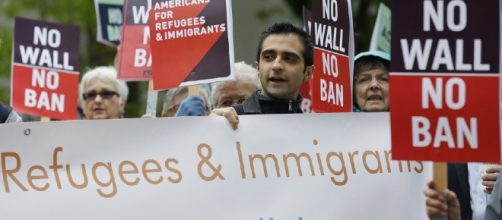President Donald trump received another blow when the Court of Appeals ruled against the Trump Administration's attempt to block immigrants - especially those from Muslim countries - and their demands that all refugees should be fully vetted before they are allowed into the country. It is one of the proposals that received resistance from lots of people but also received praise in the same measure. In the new proposed law, Trump argued that only close family members of residents in the US could qualify for entry into the US. Citizens from Syria, Sudan, Somalia, Libya, Iran, and Yemen would be denied visas according to Trump.
Only refugees who were on travel to the US as of July 6 would be allowed to the country.
How the judges made their decision
The court ruling to overturn Trump's immigration decision was made by a three judge bench who unanimously ruled that even the extended families of those living in the US are allowed to visit. Refugees who were also authorized by a resettlement agency shouldn't be denied rights to be in the country. The ruling was in line with another decision made by a district court judge in Hawaii.
Final hearing
A hearing has been set for October where all parties will be given an ear. In June, the same Court of Appeals had given the Trump Administration the go-ahead to implement the ban before a final hearing to be held in October.
A judge in Hawaii ruled against it by quoting "bona fide relationships" and asking how to decide which relationships qualify as "bona fide" and which ones do not. However, Trump's ban received support from Us Attorney General Jeff Sessions and stated that a judge in the Pacific Ocean cannot overturn an order that had been given by the President of the United States.
Conservative commentator Charles Krauthammer was against the judge overturning Trump's ban deeming the ruling "disgraceful" for imposing the court's judgment.
When was the ban first implemented?
The first travel ban was implemented in January and brought a lot of uneasiness and attracted protests around the country and all over the world.
The courts ruled against that ban. It was replaced by a new ban in March to replace the order from January. A Department of Justice Spokesman stated that the Supreme Court had acted to correct the smaller courts before and they would be moving to the Supreme Court again to vindicate the Executive's arm of the government in the Supreme Court. The Hawaii judge, however, hit back with a statement that they would continue fighting back as this will be the only way to keep families glued together. The ruling was received with a lot of jubilation and praise from refugee organizations.
Precedent ruling
In upholding the Hawaii's court decision, the 9th circuit ruled the right to entry was regulated by individual screening before one is allowed entry into the country.
The court also argued that if a refugee does not arrive in the country or is delayed, then the refugee council will lose all resources it had spent or preparing to spend on the refugee. The 9th circuit stated that there were more than 175000 refugees who lacked stay and would not be allowed into the country.


